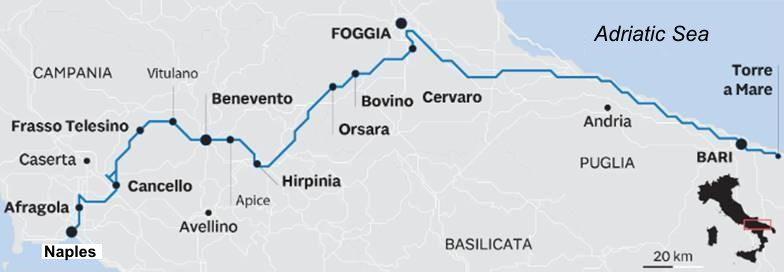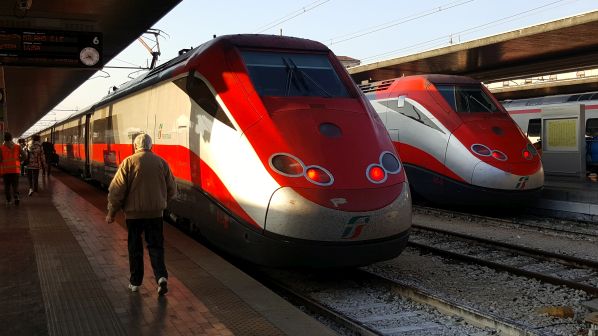The joint venture, of which Ghella has a 47.15% controlling share alongside Itinera, Salcef and Coget Impianti, was announced as the preferred bidder for the contract in June 2020. This section will have a design speed of 200km/h for passenger services and 140km/h for freight trains.
The section, which incorporates an existing conventional line in the province of Benevento, consists of the Telese Terme - San Lorenzo Maggiore, and San Lorenzo Maggiore - Vitulano functional lots, and includes 14 bridges and viaducts, 9.7km of earthworks and seven tunnels, the longest of which, the Le Forche tunnel, is 2.2km long. The line will also have stops at Solopaca, San Lorenzo and Ponte Casalduni.
The Naples - Bari line is part of Italy’s High Speed, High Capacity (HS/HC) project, and also forms a key section of the Scandinavia-Mediterranean rail corridor of the European Union’s (EU) Trans-European Transport Network (TEN-T). The line is expected to open in 2027 and will cut end-to-end journey times by 1h 40min to two hours non-stop.
The project will be partially funded through a €2bn loan awarded by the European Investment Bank (EIB) in September.

Systra and SWS
Following the signing of the contract, the Ghella-led joint venture awarded a design contract for the section to a Systra-led joint venture with engineering firm SWS, which was selected prior to tendering. Systra holds a majority share of 58% of the design joint venture.
Under the contract, the joint venture will carry out detailed designs for track-doubling the Telese - Vitulano section. Systra is responsible for the design of:
- the alignment
- bridges and viaducts
- stations
- mechanical, electric and public health (MEP)
- track, including the dismantling of the existing line and the construction of the new one
- catenary and electrical substations
- signalling and telecommunications, and
- low voltage systems.
SWS is responsible for the design of:
- tunnels, including MEP
- geology
- geotechnics
- environmental studies
- hydrology, and
- hydraulics.
The joint venture will also provide Building Information Modelling (BIM) services for the project throughout both the design and construction phases.
For detailed data on high-speed projects from around the world, subscribe to IRJ Pro.

